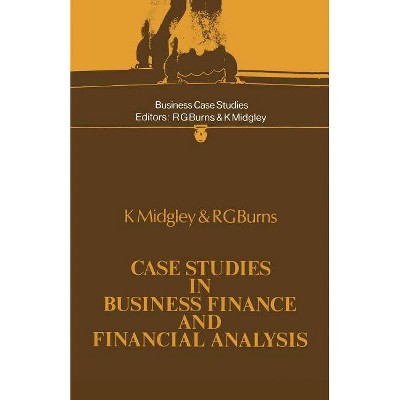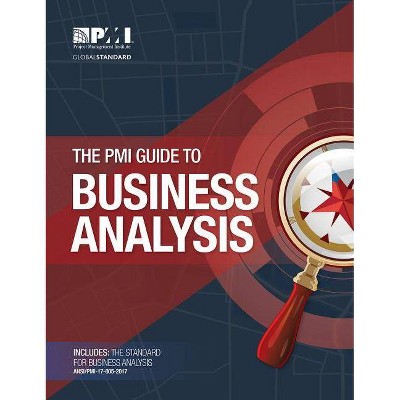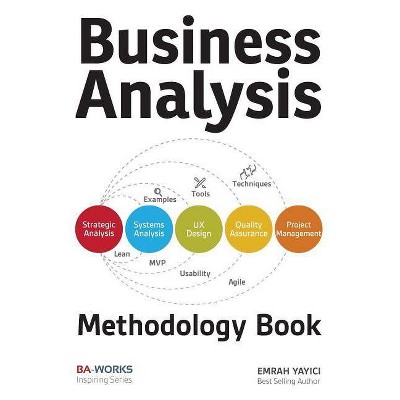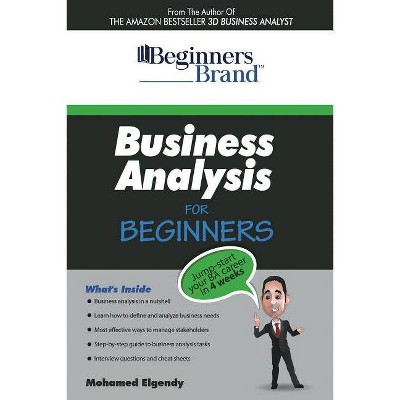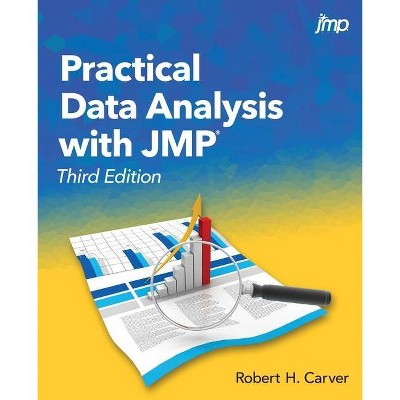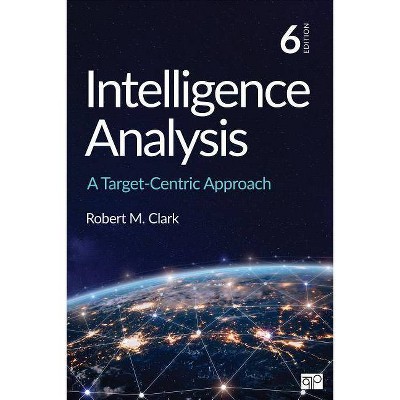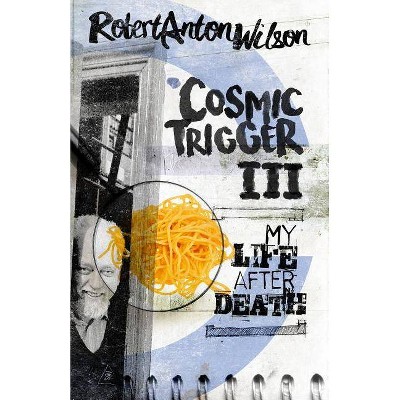Business Case Analysis with R - by Robert D Brown III (Paperback)
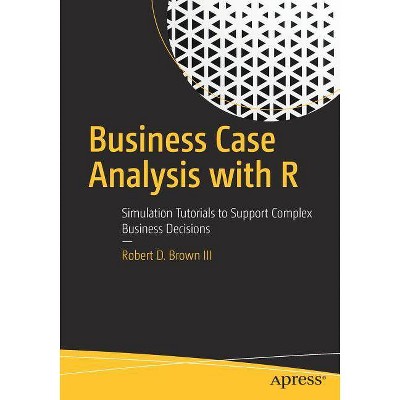
Similar Products
Products of same category from the store
AllProduct info
<p/><br></br><p><b> About the Book </b></p></br></br>"This tutorial teaches you how to use the statistical programming language R to develop a business case simulation and analysis. It presents a methodology for conducting business case analysis that minimizes decision delay by focusing stakeholders on what matters most and suggests pathways for minimizing the risk in strategic and capital allocation decisions. Business case analysis, often conducted in spreadsheets, exposes decision makers to additional risks that arise just from the use of the spreadsheet environment. R has become one of the most widely used tools for reproducible quantitative analysis, and analysts fluent in this language are in high demand. The R language, traditionally used for statistical analysis, provides a more explicit, flexible, and extensible environment than spreadsheets for conducting business case analysis. The main tutorial follows the case in which a chemical manufacturing company considers constructing a chemical reactor and production facility to bring a new compound to market. There are numerous uncertainties and risks involved, including the possibility that a competitor brings a similar product online. The company must determine the value of making the decision to move forward and where they might prioritize their attention to make a more informed and robust decision. While the example used is a chemical company, the analysis structure it presents can be applied to just about any business decision, from IT projects to new product development to commercial real estate. The supporting tutorials include the perspective of the founder of a professional service firm who wants to grow his business and a member of a strategic planning group in a biomedical device company who wants to know how much to budget in order to refine the quality of information about critical uncertainties that might affect the value of a chosen product development pathway."--<p/><br></br><p><b> Book Synopsis </b></p></br></br><p>This tutorial teaches you how to use the statistical programming language R to develop a business case simulation and analysis. It presents a methodology for conducting business case analysis that minimizes decision delay by focusing stakeholders on what matters most and suggests pathways for minimizing the risk in strategic and capital allocation decisions. Business case analysis, often conducted in spreadsheets, exposes decision makers to additional risks that arise just from the use of the spreadsheet environment.</p> <p>R has become one of the most widely used tools for reproducible quantitative analysis, and analysts fluent in this language are in high demand. The R language, traditionally used for statistical analysis, provides a more explicit, flexible, and extensible environment than spreadsheets for conducting business case analysis. </p> The main tutorial follows the case in which a chemical manufacturing company considers constructing a chemical reactor and production facility to bring a new compound to market. There are numerous uncertainties and risks involved, including the possibility that a competitor brings a similar product online. The company must determine the value of making the decision to move forward and where they might prioritize their attention to make a more informed and robust decision. While the example used is a chemical company, the analysis structure it presents can be applied to just about any business decision, from IT projects to new product development to commercial real estate. The supporting tutorials include the perspective of the founder of a professional service firm who wants to grow his business and a member of a strategic planning group in a biomedical device company who wants to know how much to budget in order to refine the quality of information about critical uncertainties that might affect the value of a chosen product development pathway.<p></p><p></p> <p><b>What You'll Learn</b></p><p></p><ul><li>Set up a business case abstraction in an influence diagram to communicate the essence of the problem to other stakeholders<br></li><li>Model the inherent uncertainties in the problem with Monte Carlo simulation using the R language<br></li><li>Communicate the results graphically<br></li><li>Draw appropriate insights from the results<br></li><li>Develop creative decision strategies for thorough opportunity cost analysis<br></li><li>Calculate the value of information on critical uncertainties between competing decision strategies to set the budget for deeper data analysis<br></li><li>Construct appropriate information to satisfy the parameters for the Monte Carlo simulation when little or no empirical data are available<br></li></ul><p></p> <p></p> <p></p> <p></p> <p></p> <p></p> <p></p> <p></p> <p><b>Who This Book Is For</b></p> <p>Financial analysts, data practitioners, and risk/business professionals; also appropriate for graduate level finance, business, or data science students<b></b></p><p/><br></br><p><b> From the Back Cover </b></p></br></br><p>This tutorial teaches you how to use the statistical programming language R to develop a business case simulation and analysis. It presents a methodology for conducting business case analysis that minimizes decision delay by focusing stakeholders on what matters most and suggests pathways for minimizing the risk in strategic and capital allocation decisions. Business case analysis, often conducted in spreadsheets, exposes decision makers to additional risks that arise just from the use of the spreadsheet environment.</p><p>R has become one of the most widely used tools for reproducible quantitative analysis, and analysts fluent in this language are in high demand. The R language, traditionally used for statistical analysis, provides a more explicit, flexible, and extensible environment than spreadsheets for conducting business case analysis.</p>The main tutorial follows the case in which a chemical manufacturing company considers constructing a chemical reactor and production facility to bring a new compound to market. There are numerous uncertainties and risks involved, including the possibility that a competitor brings a similar product online. The company must determine the value of making the decision to move forward and where they might prioritize their attention to make a more informed and robust decision. While the example used is a chemical company, the analysis structure it presents can be applied to just about any business decision, from IT projects to new product development to commercial real estate. The supporting tutorials include the perspective of the founder of a professional service firm who wants to grow his business and a member of a strategic planning group in a biomedical device company who wants to know how much to budget in order to refine the quality of information about critical uncertainties that might affect the value of a chosen product development pathway.<p></p><p></p><p>What You'll Learn: </p><p></p><ul><li>Set up a business case abstraction in an influence diagram to communicate the essence of the problem to other stakeholders<br></li><li>Model the inherent uncertainties in the problem with Monte Carlo simulation using the R language<br></li><li>Communicate the results graphically<br></li><li>Draw appropriate insights from the results<br></li><li>Develop creative decision strategies for thorough opportunity cost analysis<br></li><li>Calculate the value of information on critical uncertainties between competing decision strategies to set the budget for deeper data analysis<br></li><li>Construct appropriate information to satisfy the parameters for the Monte Carlo simulation when little or no empirical data are available</li></ul><p/><br></br><p><b> About the Author </b></p></br></br><b>Robert D. Brown III</b> is the President of Incite! Decision Technologies LLC, a consultancy supporting senior decision makers facing complex, high-risk opportunities. These opportunities usually include strategic planning, project selection, planning & risk management, and project portfolio analysis & management. <p/>Mr. Brown has devoted his 20-year career to providing solutions to his clients' complex problems by employing creative thinking and advanced quantitative business, engineering, and systems analysis. His client experience spans diverse industrial and commercial fields, including petroleum & chemicals, energy, utilities, logistics & transportation, pharmaceuticals, electronics manufacturing, telecommunications, IT, commercial real estate, federal agencies, and education. Through Incite, Mr. Brown delivers analysis, decision support tools and systems, and training in decision making and risk management with the goal of helping his clients measure the value and the risk associated with the important decisions they face in order to make informed trade-offs and choices. Incite provides "Moneyball" for businesses. <p/>Mr. Brown graduated from the Georgia Institute of Technology in 1992 with a bachelor degree in mechanical engineering (co-op program) with an emphasis in control systems.<br>
Price History
Price Archive shows prices from various stores, lets you see history and find the cheapest. There is no actual sale on the website. For all support, inquiry and suggestion messagescommunication@pricearchive.us
